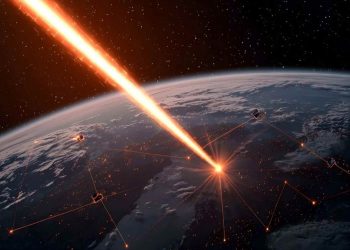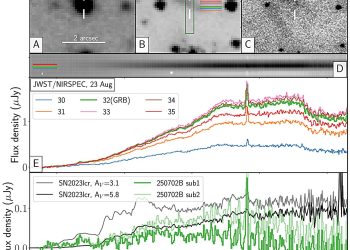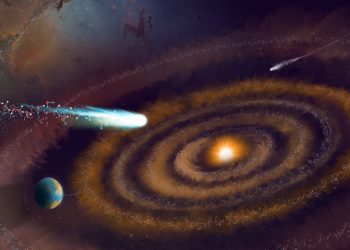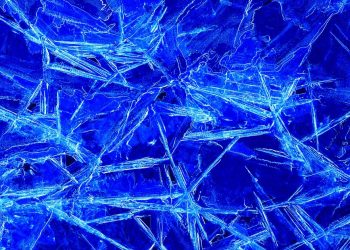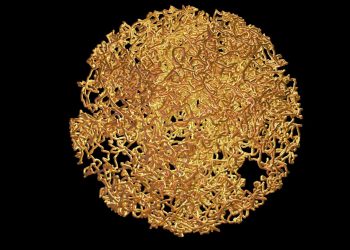Astronomers analyzing observations of interstellar comet 3I/ATLAS using the WM Keck Observatory have discovered other unusual features of our third interstellar visitor and confirmed the presence of a rare “anti-solar tail.”
On July 1, 2025, astronomers from the ATLAS (Asteroid Terrestrial-impact Last Alert System) system spotted an object crossing our solar system. This is no surprise, given its name. What was unusual and very interesting was that the object appeared to be the fastest object of its type ever observed, and had an eccentricity of between 6.1 and 6.2.
An eccentricity greater than 1 means it is an interstellar visitor, the third we have found so far, and will leave our solar system again. It was named 3I/ATLAS to reflect the fact that it is the third interstellar object discovered, as well as the team that found it in our sky.
3I/ATLAS has been the subject of (dubious) speculation that it is not a natural object. Astronomers have since tracked the object, which was confirmed to be a comet due to its outgassing. Although there is little reason to suspect that 3I/ATLAS is anything other than a natural object, it is of great interest to both scientists and the public, having traveled alone in interstellar space for perhaps 10 billion years.
In a new paper, which has not yet been peer-reviewed, an international team of researchers analyzed the comet’s spectrum, used to determine the elements present on the object and in its coma, as observed by the Keck Cosmic Web Imager mounted on Keck-II on August 24.
“One avenue to understanding these objects lies in cometary activity or lack thereof,” the team explains in their paper, adding that the activity is caused by solar radiation heating the comet’s surface materials.
“When a comet heats up, its volatile ices sublimate, lifting dust from the surface and creating the coma. Sunlight excites these gas molecules, which then re-emit light through resonance fluorescence, revealing the composition of the volatiles. For comets in the Solar System, this provides a window into the primordial composition of the Solar System. The objects Interstellar systems allow similar studies for otherwise inaccessible star systems. “
By analyzing the spectra of light reflected from the comet, astronomers can determine what elements and compounds it contains. We already have some puzzles presented by 3I/ATLAS in this regard, with a previous paper revealing that it has an “extreme abundance ratio” of iron/nickel.
“Emission lines of FeI and NiI are commonly found in the coma of Solar System comets, even at large heliocentric distances. These atoms are most likely released from the surface of the comet nucleus or a short-lived parent,” the previous team explained in their paper. “The presence of these lines in cometary spectra is unexpected because the equilibrium temperature of the black body surface is too low to allow the sublimation of refractory minerals containing these metals.”
Although the chemical relationships are unusual, this is perhaps to be expected from an object that could be a 10 billion-year-old time capsule from an earlier age of the universe. The main mystery is how these metals ended up in the comet’s coma.
“At the distances at which comets are observed, the temperature is much too low to vaporize silicates, sulfides, and metal grains containing nickel and iron atoms,” the team added. “Therefore, the presence of nickel and iron atoms in the cometary coma is extremely puzzling.”
The new paper reports clear detection of nickel (Ni) and cyanide (CN), as reported by previous observations, and weak/non-existent detection of the presence of iron (Fe). In this work, the team was able to obtain a better spatial profile of the comet and its coma, by mapping the origin of the elements.
“Ni is concentrated more centrally than CN, with the majority of the Ni flux coming from the deepest 2,000 km (1,243 miles) of 3I/ATLAS,” the team explains. “On the other hand, the radial profiles suggest that the CN, although still concentrated near the nucleus, extends further into the coma.”
The team suggests that nickel, which extends about 594 kilometers (369 miles) and much less than cyanide at 841 kilometers (523 miles), could be released by an intermediate “parent” molecule that is quickly broken down by solar radiation.
“Metals such as Ni can attach to PAHs to form Ni+PAH molecules (e.g., Ni-naphthalene Ni(C10H8) potentially). These molecules detach easily by absorbing light and can produce centrally concentrated Ni, as observed in 3I/ATLAS,” the team writes.
On top of that, the team uncovered other mysteries, including that the production rate of nickel relative to cyanide is “greater than 2 I/Borisov and several orders of magnitude higher than the median for solar system comets.”
A particularly interesting aspect of the comet is that it has developed an “anti-tail” or “anti-solar tail”, which is a tail pointed towards the Sun, as confirmed in the new paper. Previously, the sometimes controversial Harvard astronomer Avi Loeb sparked controversy (see) by suggesting in a paper with his colleague Eric Keto: “This phenomenon, observed at a distance of 3.8 au from the Sun, is not common and perhaps first observed in 3I/ATLAS.” » However, before you suggest aliens like Loeb, it’s not entirely unheard of.
There are two different types of anti-tail. One of them is actually an optical illusion caused by the position of the comet and the Sun relative to the Earth.
A second type – the one seen in 3I/ATLAS – occurs when large grains are ejected from the comet, but are not pushed back by the solar wind to the Sun-facing side of the comet.
“While such morphology is certainly unusual – given that dust tails are typically directed antisolarly due to the radiation pressure acting on the dust grains – it is not unprecedented among distant active bodies,” explains a paper on the subject. “Notably, Farnham et al. (2021) reported a similar sunward increase in comet C/2014 UN271 (Bernardinelli-Bernstein), which they interpreted as the result of the slow ejection of relatively large dust particles, primarily from the sunlit hemisphere.”
As always, more observations of these objects are needed to learn more about them and the environments in which they evolved. We’ll learn more as we search for more interstellar objects, which will hopefully become easier when the Vera C. Rubin Telescope begins exploring the sky. When we find more, we might even be able to catch up with them.
The study, which has not yet been published in a peer-reviewed journal, is posted on the preprint server arXiv.




